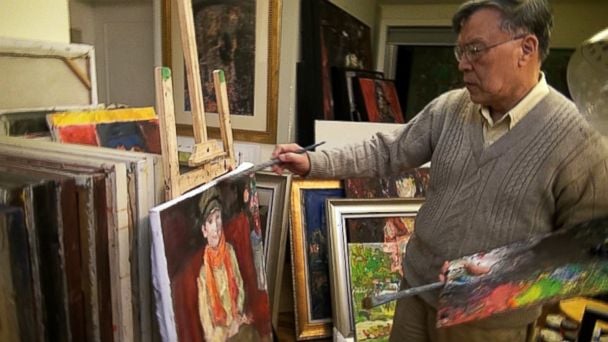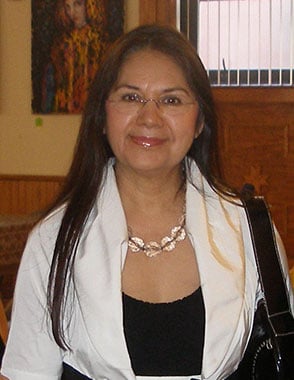Galleries
Knoedler Forger Claims Innocence
In his first TV interview, Pei Shen Qian tells ABC his version of the story.

In his first TV interview, Pei Shen Qian tells ABC his version of the story.

Sarah Cascone

The elderly Chinese artist who created the knock-off Abstract Expressionist paintings passed off as the real deal by dealer Glafira Rosales in the Knoedler & Co. forgery scandal has denied having any knowledge of the scheme in interviews with World News With Diane Sawyer and Nightline, reports ABC 30.
Pei Shen Qian, currently under federal indictment in New York, has fled from his home and studio in Queens to his native China, presumably to avoid prosecution on fraud charges. He is accused of painting some 63 forgeries, playing a key role in the Long Island fraud ring that began in the early 1990s and flooded the market with worthless canvases that collectively sold for upwards of $80 million.
When ABC tracked him down in Shanghai, the artist insisted he was “shocked” to learn that collectors had bought his paintings for tens of millions, believing the canvases to be masterpieces by Mark Rothko, Jackson Pollock, and others.
“When I made these paintings, I had no idea they would represent them as the real thing to sell,” said Qian in his first interview since he was identified as the forger behind the Knoedler fakes. “My intent wasn’t for my fake paintings to be sold as the real thing,” he added. “They were just copies to put up in your home if you like it.”
The federal grand jury indictment tells a different story, claiming that Qian lied to FBI agents, denying any familiarity with artists “whose names Qian had repeatedly and fraudulently signed on paintings Qian created.” While it is not illegal to create artwork in the style of particular artist, or even to sign their name to the canvas, selling it as their original work is a crime.
The US does not have an extradition treaty with China, so Qian is currently safe from prosecution. The others involved in the scheme, described by US attorney Preet Bharara, of the Southern District of New York, as “modern masters of forgery and deceit,” have been less lucky.

Long Island art dealer Glafira Rosales, who pleaded guilty to fraud and money laundering.
Rosales pleaded guilty to fraud and money laundering last year (see artnet News report), and her boyfriend, Jose Carlos Bergantinos Diaz, her alleged partner in crime, is under arrest in Spain and awaiting extradition to the US (also reported by artnet News).
The duo are thought to have recruited Qian after seeing his work on a Manhattan street corner. When they approached high-end New York galleries such as Knoedler, they claimed to represent a mystery client who wished to remain anonymous who had inherited a large number of Abstract Expressionist masterpieces.
Although his artwork fooled the experts (even when signatures were misspelled, as recently reported by artnet News), Qian insists that he saw very little of the millions his canvases fetched when purchased by wealthy collectors, receiving just $5,000–8,000 per work. “If you look at my bank account, you’ll see there is no income,” he assured ABC.
In Shanghai, Qian continues to paint, but now he signs his canvases with his own name. Before he came to the States, he was a well-known artist in China, where he held numerous exhibitions and was the subject of a hardcover book. His art, he says, is his passion: “Painting. Painting. Painting. Everything is done for painting.”